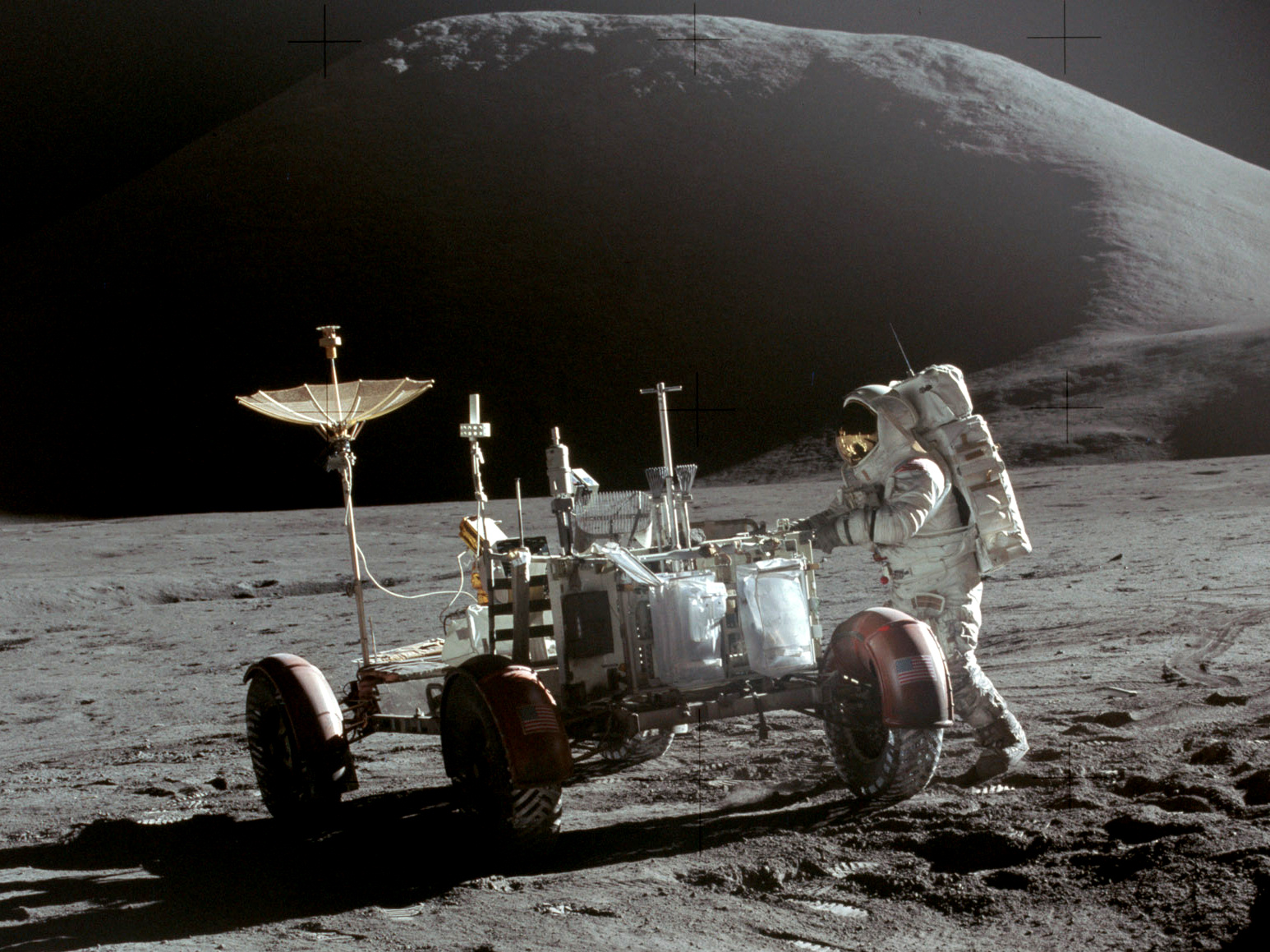22 October 2008
Plans of Chandrayaan-II
Chandrayaan-II is an Indo-Russian joint venture. Russian federal space agency have already signed a pact with ISRO. "One of the two GSLV missions next year will carry Chandrayaan-II", says ISRO Chairman Mr. G. Madhavan Nair.
Chandrayaan-II would feature a lander and a rover for a soft land on moon. The rover will be designed by Russia’s federal space agency. India may be the second country to land a rover on the moon after USA during NASA's Apollo missions.
Mr. Nair expects more accomodating payloads (experiments) from other space agencies for the second odyssey just as in Chandrayaan-I. Chandrayaan-I carried 11 payloads of which 5 are Indian, 3 are from the European Space Agency, 2 from the NASA and one from Bulgaria.
"Even though China's and Japan's moon satellite (which are still in Moon's orbit) took high resolution pictures of the moon, they aren't as comprehensive as Chandrayaan-I", says former NASA associate administrator Scott Pace. The budget of Chandrayaan-I is also considerably cheaper than that of Japan or China.
This also strenghtens the space race in Asia. Japan, China and now India have successfully launched moon missions. China is leading in the race ever since they put taikonauts (Chinese Astronauts) in space in 2003 and had their first space walk last month. Even though this is India's first space expedition beyond Earth's orbit India is quickly catching up with China. India might even successfully land a rover and also humans on the moon's surface even before China.
Chandrayaan in Orbit
Chandrayaan was launched at 6:22am today and by 18 mins the satellite was put into orbit. So far there has not been a problem in the satellite or the rocket. The rocket projected through the designated path perfectly and ISRO says it has hit a “Bull’s Eye”.
I was eagerly waiting with a camera to shoot a video of the rocket on my terrace. Unfortunately over-cast did not help me at all. Thick clouds blocked the view of the rocket completely.
PSLV C-11 with Chandrayaan on its way to the Launch Pad
I will be constantly updating on the Chandrayaan mission and hope that it will successfully reach the moon’s orbit which is due in two weeks time.
20 October 2008
Mission Chandrayaan
Indian Space Research Organization (ISRO) reaches a new peak in their mission. In two days time Chandrayaan-I will be launched at Sriharikota on October 22, 2008 at exactly 6:20am IST.
Chandrayaan-I is an un-manned lunar spacecraft (meaning it carries no human). The spacecraft (Chandrayaan-I) will be launched by a modified version of Polar Satellite Launch Vehicle (PSLV-C11). The lunar probe would revolve around Moon for two years taking high resolution images of the lunar surface and also mapping its chemical and mineralogical content. It also concentrates on the polar region where water and ice could possibly be found. The satellite weighs about 1304 kg and the estimated cost is about INR 3.8 billion.
Chandrayaan-I under construction
The scientific payloads/experiments of Chandrayaan are TMC, HySI, LLRI, HEX, MIP, C1XS, SIR-2, SARA,
The Path of Chandrayaan
The Moon Exploration began on September 14, 1959, when Luna 2 was launched by
Chandrayaan-I will be followed by Chandrayaan-II in 2010/11. Chandrayaan-II will consist of the spacecraft itself and a landing platform with the Moon Rover. A moon rover is an automated motorized vehicle which moves around the surface of the moon, collecting soil and rock samples, do in situ chemical analysis and transmit it to the mother-spacecraft, Chandrayaan-II.
A artistic representation of the Chandrayaan-II rover
The Lunar Rover of Apollo 15 with James Irwin
ISRO also plans to undertake a manned space exploration by 2014 (send man to space).
If these missions succeed, then ISRO plans to send a manned mission to the moon on 2020. If ISRO succeeds in this,
Meanwhile
I just hope all this works out for
Chandrayaan-I is ready for the launch
People who live in Chennai can actually see the launch of Chandrayaan-I. Look at North at the exactly 6:20am on October 22nd. You should be able to see the rocket shooting upwards provided the clear sky.
1 October 2008
Picture Of The Month - September 2008

This picture was taken on September 1st, at Perth, Australia. This evening picture shows the crescent Moon along with three planets. The brightest of the three is Venus as the Evening Star. The tiny shining object above Venus is Mercury and the object at the top most is Mars. The three planets are found on the western sky after the sunset. This picture was taken across the Swan River and the six towers on the left of the image surrounds the Perth Cricket Stadium.





